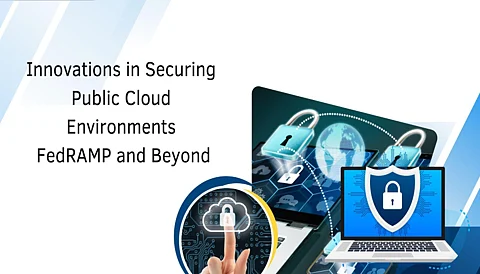

The digital transformation in public cloud adoption brings a new age of governance strategies, fundamentally transforming the way federal agencies manage their IT infrastructures. The move from traditional legacy frameworks to cloud-first policies indicates that there is more emphasis on integration of security, compliance, and operational efficiency. Today's cloud environments require super-strong systems with the integration of regulatory means, detailed advanced security controls, and smooth working processes to fulfill the federal agencies' complicated and dynamically changing demands. This in-depth analysis is done by Venkata Jagadeesh Reddy Kopparthi; the findings are sure to bring forth the critical interaction of innovation and governance in public areas.
Modern cloud governance is supported by identity management, resource optimization, and stringent data protection measures. Over 900 control specifications of the framework have been developed under the NIST Special Publication 800-53. Such controls ensure proper governance on areas like access management, incident response, and configuration oversight. In this manner, agencies are allowed to optimize their digital infrastructures while ensuring that they have the best security measures.
FedRAMP compliance represents a change from earlier "cloud-first" policies to a "cloud-smart" approach. This methodology integrates security as a key enabler of cloud adoption. By categorizing low, moderate, and high security levels, FedRAMP has standardized the evaluation process to ensure that agencies can meet their compliance goals without compromising operational efficiency.
Advanced technical solutions like Zero Trust architectures are transforming cloud security strategies for public sector agencies, providing a solid means of securing sensitive data. It is applied based on the principle of "never trust, always verify," Zero Trust frameworks further enhancing security through integration with encryption modules and isolation of keys for encrypting different data types and by the use of conditional access policies suited to different roles and activities. These proactive strategies not only ensure the integrity and accessibility of data but also minimize exposure to unauthorized access. This layered security approach fortifies the critical infrastructure, allowing organizations to continue managing operations while building confidence in confronting dynamic cyber threats.
Securing a public cloud environment depends on a shared responsibility model that makes all stakeholders emphasize collaboration between agencies and the cloud providers involved. This model ensures that both parties address their respective obligations in managing security risks across various service models, such as IaaS, PaaS, and SaaS. Automated monitoring tools are very important to give insight into possible vulnerabilities in real-time, and also a tailored incident response strategy will enable swift and effective mitigation of risks specific to each cloud environment. These practices ensure compliance, enhance security measures, and build operational resilience.
The rapid pace of evolution of cloud technologies has brought some revolutionary changes, such as AI-driven threat detection and automated compliance monitoring, to the way organizations secure their digital environments. These innovations have delivered tangible benefits, enabling faster identification of security threats and significantly reducing the frequency and impact of incidents. With multi-cloud strategies gaining wide acceptance across the agencies, this complexity in handling the diverse platforms puts a spotlight on the unified security frameworks that need to be deployed across the boards to ensure the fluid integration of multiple platforms and total threat assessment besides ensuring complete compliance.
Cloud governance actually depends upon ensuring that all of the teams including security, operation, and development teams get to act in alignment while meeting compliance requirements with great efficiency and accuracy. Organizations can align their approach towards managing their cloud environments by working together across the critical functions involved. Implementing automated compliance verification processes and continuous security assessments plays a key role in proactively identifying and mitigating potential threats. These measures improve security outcomes, as vulnerabilities are addressed in real-time and operations become more resilient, with the result being a strong and dependable cloud infrastructure capable of supporting long-term success.
Though a lot has been achieved, challenges still exist in multi-cloud governance and supply chain security, where complexity often prevents easy implementation. Innovative solutions and proactive strategies must be developed to mitigate risks and maintain compliance. Agencies can overcome these hurdles by implementing robust governance frameworks and leveraging emerging technologies such as AI-driven monitoring and automated compliance tools. Prioritizing operational excellence and stringent compliance measures enables the public sector to navigate these challenges confidently, laying the groundwork for a secure and efficient digital transformation.
In conclusion, Venkata Jagadeesh Reddy Kopparthi’s insights into cloud governance provide a roadmap for organizations striving to enhance their cloud adoption strategies. The article underscores the importance of balancing innovation with security, offering actionable recommendations for the future of secure cloud computing.
